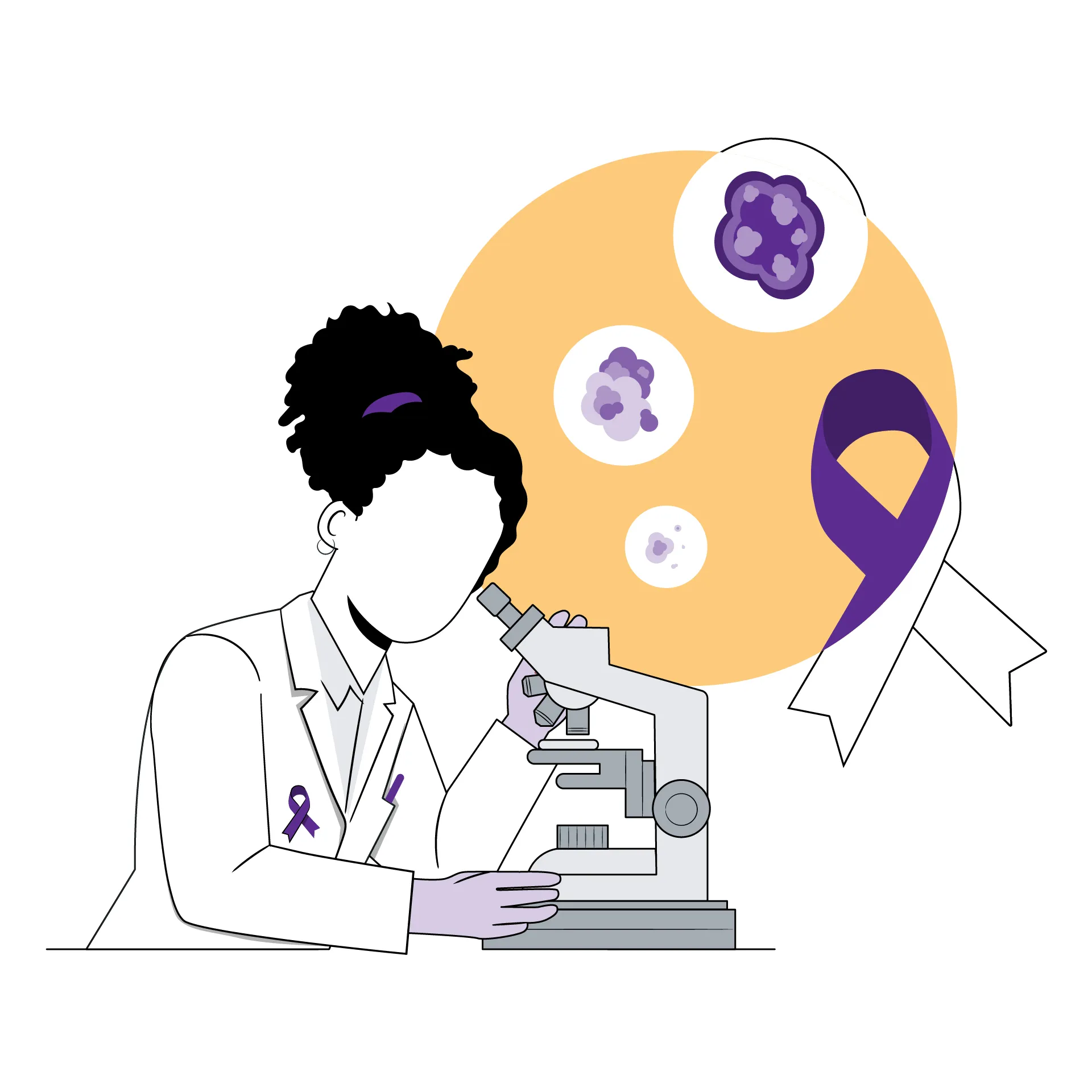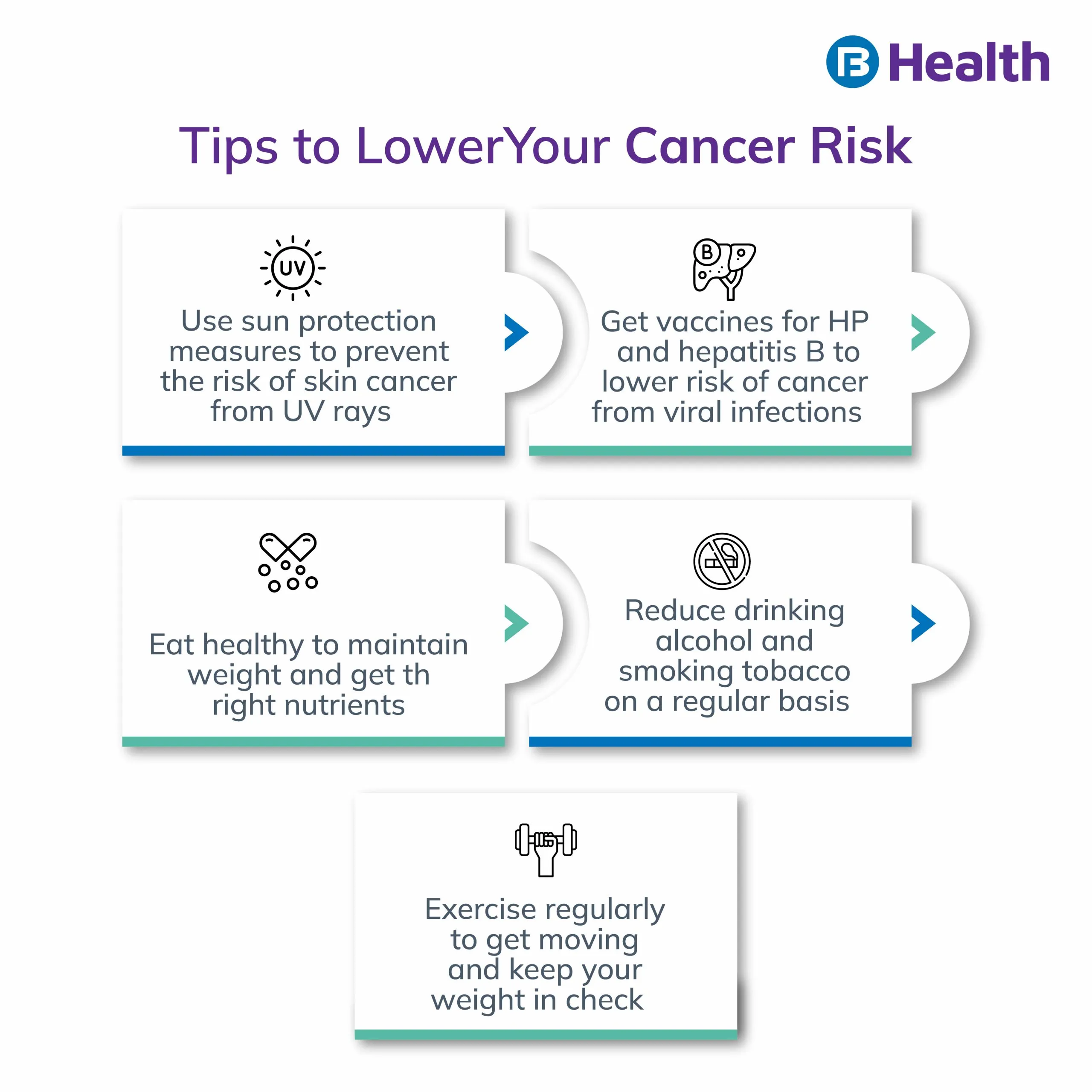Cancer | 6 min read
Stages of Cancer: Different Cancer Staging and Tumor Grade
Medically reviewed by
Table of Content
Synopsis
Cancer is a chronic disease that is curable depending on the stages of cancer. The best treatment for different types of cancer can be provided by knowing the diagnosed cancer stage.
Key Takeaways
- Stages of cancer range from 0 to 4, where Stage 4 cancer is the most advanced
- Numbered and TNM staging are the two most commonly used staging systems
- Tumor grades are also assigned to track the abnormality of cancer cell growth
The different stages of cancer determine the growth of malignant tumors in our body. There are different staging systems to determine the stages of cancer. Before diving into the staging system, it is important that you get a brief idea of cancer and how it occurs. In simple terms, cancer is the overgrowth of your cells, which then turn into a tumor.
Cancer can begin from anywhere in your body and can spread anywhere too. The causes of cancer include a number of things such as excessive exposure to UV rays, tobacco smoke, arsenic, or infection from certain bacteria or viruses.
Apart from your doctor, you and your family should also know the stages of cancer to better understand your or your loved one’s health. Knowing the stages of cancer is also crucial in understanding the possible complications associated with each stage. Having this information can help you reassess your lifestyle. This helps you make changes that can help you get better results from your treatment. Read on to know more about the stages of cancer and their indications.

What is Cancer Staging?
When a malignant tumor forms in your body, they transform into cancer cells. These cells then move through your blood and lymphatic fluid. The cancer cells spread vigorously to form new tumors in other parts of your body. This whole process is called metastasis.
Stages of cancer help you get a holistic view of how much cancer has spread and in which portions of your body. Your doctor will detect where the tumors are present in your body and provide a diagnosis of the stages of cancer to determine the right treatment [1]. Usually, all types of cancer have four stages, 0 to 4.
- Stage 0: It denotes the original tumor in place with no sign of further spread. Cancer at this stage has dedicated treatment processes like surgeries.
- Stage 1: Here, the cancer cells haven’t spread to other tissues. The cells haven’t entered the bloodstream or lymphatic system and are considered to be in the early stages of cancer.
- Stage 2-3: These stages of cancer show moderate growth of cancer cells in the neighboring tissues and in the lymph nodes.
- Stage 4: Cancer spreads to other body parts during this stage. Stage 4 cancer is known as metastatic cancer, which has the highest risk of fatality.
What are the Different Cancer Staging Systems?
The stages of cancer give insights about primary tumor location, tumor size, and the number of tumors present in your body. There are two different cancer staging systems that provide a fact sheet on these determining factors of different stages of cancer.
1. Numbered Staging System
Doctors use the numbered system to detect different types of cancer into five categories. Each stage indicates the severity of the spread of cancer cells. The numbered stages are:
Stage 0 – Cancer stays dormant and doesn’t spread
Stage 1 – Cancer growth is small but doesn’t spread further
Stage 2 – Prominent cancer cell growth with no spread
Stage 3 – Cancer spreads to the nearby tissues or lymph nodes
Stage 4 – Cancer spreads at least to one other body part leading to metastasis

2. TNM Staging System
TNM staging is the commonly used staging system for most types of cancer. The system includes letters and numbers to determine the stages of cancer.
- The letter T describes the tumor size ranging from 1 to 4, with 1 being the smallest size. When there is no data on a tumor, for instance, in a suspected prostate cancer patient, it is denoted as TX. T0 indicates when primary tumor location is not detected, whereas This stands for the tumor in situ, which means the cancer cells are only in the place where they originated.
- N stands for lymph nodes which range from 0 to 3 (0 indicating no spread in the lymph node). The numbers also describe the location, size, and the number of nodes that has cancer cells. NX refers to no information on lymph node damage.
- M refers to metastasis which is the spread of cancer to your other organs. The number 0 simply means no spread, and one stands for cancer spread.
TNM staging uses the results from biopsies and other tests to gather information on the patient’s cancer spread and stage.
Additional read: Prostate Cancer SymptomsWhat is a Tumor Grade?
Tumor grades describe the abnormality of cancer cells after an examination. This is not the same as stages of cancer, as it provides the rate at which the tumor can spread. These cells are called well-differentiated when the tumor is very close to the tissues and your body cells. When the tumor grows and spreads slowly, it is determined as poorly differentiated.
Based on a microscopic examination, doctors denote a number for the tumor grade. Here, a lower grade indicates a slow growth rate of cancer, and a higher grade denotes a faster growth rate. These grades are as follows.
- GX: Undetermined tumor grade
- G1: Low tumor grade indicating well-differentiated cancer cells
- G2: Intermediate tumor grade with moderately differentiated cancer cells
- G3: Highest tumor grade with undifferentiated cancer cells [2]
How do Doctors Use Cancer Staging Data?
Knowing the stages of cancer helps an oncologist determine and assess the treatment. It also helps your doctor to understand the chances of survival of the patient. Based on your tumor spread, doctors can also prescribe biopsy, cytology tests, and endoscopy for cancer staging.
Cancer treatment includes chemotherapies, radiation therapies, immunotherapies, and hormone therapies, depending on the stages of cancer. For example, to address ovarian cancer symptoms, doctors may recommend minimally invasive surgery removing only one ovary in the first stage and both ovaries and the uterus in the latter stage.
Cancer insurance helps cover the cost of medical treatment, It may pay for expenses such as chemotherapy, radiation, surgery, and hospital stays. It can also cover the cost of transportation to and from treatments and loss of income due to time off work. Cancer insurance plan can provide financial support during a difficult and costly time.
Additional read: What is Ovarian CancerDiagnosing cancer at an early stage can ensure that your treatment is most effective. You can do this by consulting a doctor when you see signs of cancer and going for regular screenings if you are at risk. Get doctor consultation with top practitioners, including surgical oncologists on Bajaj Finserv Health. With this, you can ensure that you get a timely diagnosis and an effective treatment plan. You can also book lab tests online on this platform and enjoy a variety of deals and discounts. This helps you assess your health and get early treatment when needed.
References
- https://www.cancer.org/treatment/understanding-your-diagnosis/staging.html
- https://www.cancer.gov/about-cancer/diagnosis-staging/prognosis/tumor-grade-fact-sheet#:~:text=Grading%20systems%20differ%20depending%20on,to%20grow%20and%20spread%20slowly.
Disclaimer
Please note that this article is solely meant for informational purposes and Bajaj Finserv Health Limited (“BFHL”) does not shoulder any responsibility of the views/advice/information expressed/given by the writer/reviewer/originator. This article should not be considered as a substitute for any medical advice, diagnosis or treatment. Always consult with your trusted physician/qualified healthcare professional to evaluate your medical condition. The above article has been reviewed by a qualified doctor and BFHL is not responsible for any damages for any information or services provided by any third party.





